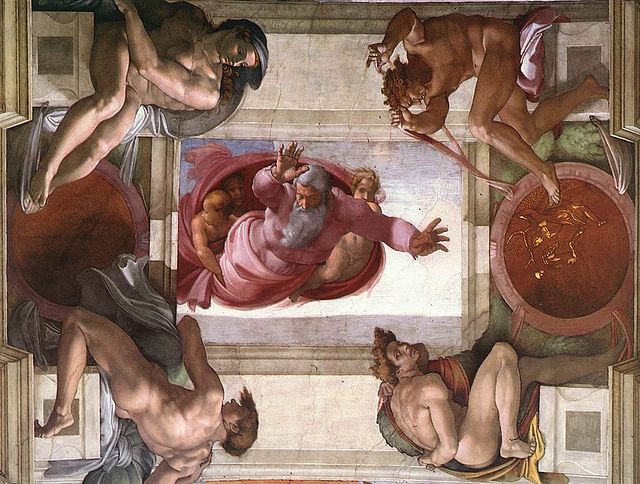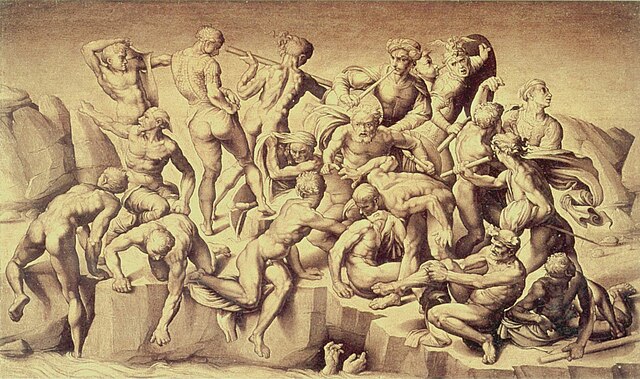Girolamo Francesco Maria Mazzola, also known as Francesco Mazzola or, more commonly, as Parmigianino, was an Italian Mannerist painter and printmaker active in Florence, Rome, Bologna, and his native city of Parma. His work is characterized by a "refined sensuality" and often elongation of forms and includes Vision of Saint Jerome (1527) and the iconic if somewhat anomalous Madonna with the Long Neck (1534), and he remains the best known artist of the first generation whose whole careers fall into the Mannerist period.
Self-portrait in a Convex Mirror (c. 1524, age about 21), Kunsthistorisches Museum, Vienna
Bardi Altarpiece (1521)
Vision of Saint Jerome (detail)
Self-portrait with red beret (1540)
Mannerism is a style in European art that emerged in the later years of the Italian High Renaissance around 1520, spreading by about 1530 and lasting until about the end of the 16th century in Italy, when the Baroque style largely replaced it. Northern Mannerism continued into the early 17th century.
In Parmigianino's Madonna with the Long Neck (1534–1540), Mannerism makes itself known by elongated proportions, highly stylized poses, and lack of clear perspective.
Mannerism role-model: Laocoön and His Sons, an ancient sculpture, rediscovered in 1506; now in the Vatican Museums. The artists of Mannerism greatly admired this piece of sculpture.
Collected figures, ignudi, from Michelangelo's Sistine Chapel ceiling
Copy after lost original, Michelangelo's Battaglia di Cascina, by Bastiano da Sangallo, originally intended by Michelangelo to compete with Leonardo's entry for the same commission








